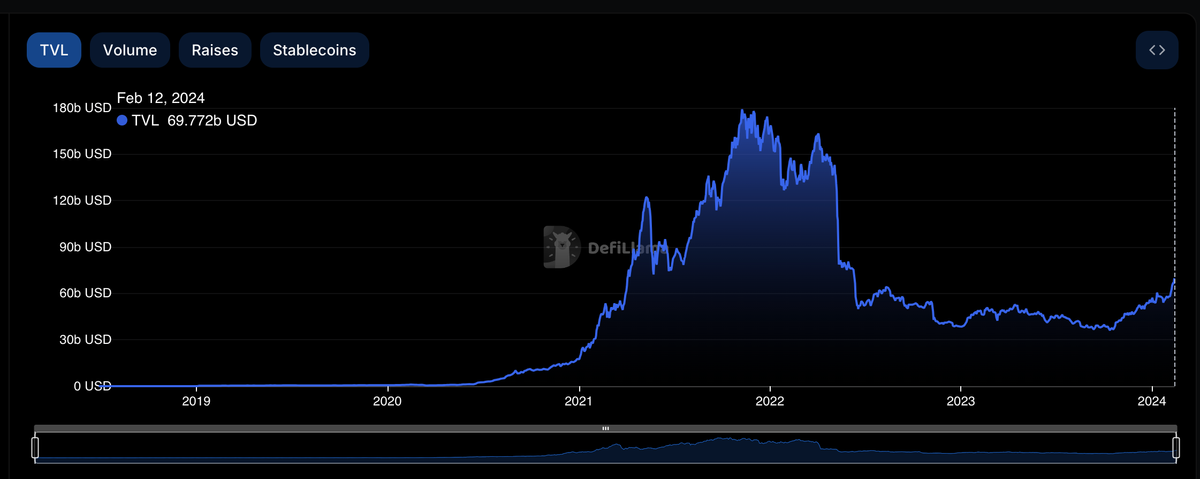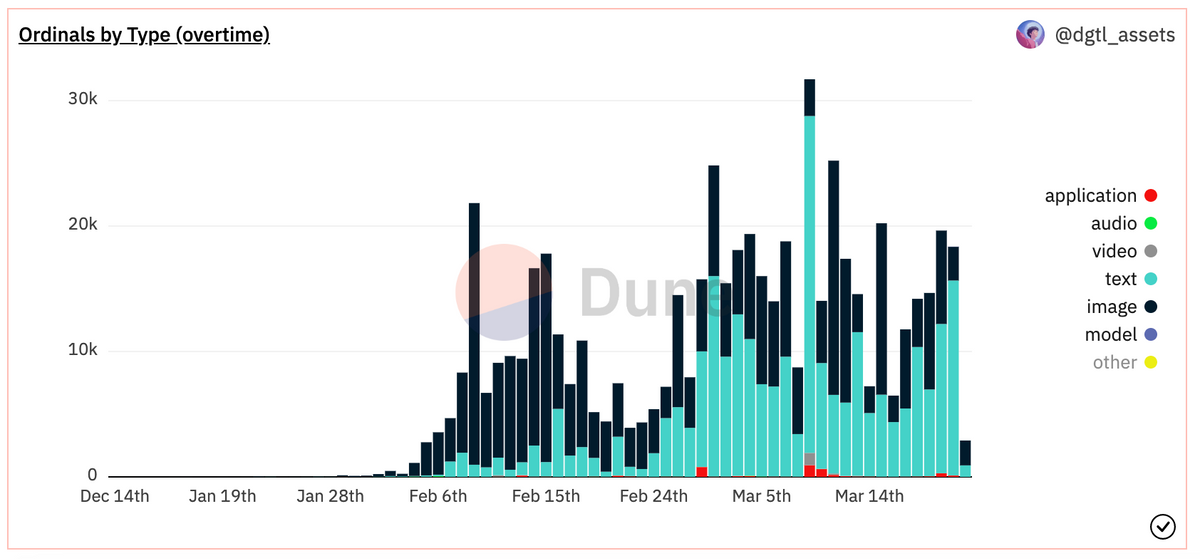What is cryptocurrency?
What is cryptocurrency? How does it work? What problems does it solve? And why should I care about crypto in the first place?

A (nontechnical) guide to understanding cryptocurrency and the creation of value in the emerging crypto economy.
The first thing to understand about cryptocurrencies is that they have an unfortunate name. It might be better for everyone if the currency was dropped from cryptocurrency.
The main reason: Cryptocurrencies don’t function much like traditional currencies. And making the comparison between emerging systems of value based on computation and the way we understand legacy money are misleading and confusing.Some in the crypto community called cryptocurrencies, cryptoassets. That seems like a better fit, and also helps people get oriented to the space a little bit quicker.
While cryptoassets do resemble other asset classes that have been around much longer, including commodities, precious metals, and securities, they also have unique characteristics that make them more suitable to become a system of value for the internet age.
So, the first step in understanding cryptocurrencies is to think of them as a new form of digitally-native asset, not necessarily (or strictly) as an alternative form of money.Another key takeaway to understand from the outset is that the cryptoasset space is very new and things are changing rapidly.
Currently, design and functionality of cryptoasset systems, such as exchanges and wallets — two of the major touch points for network users and consumers — are not the easiest things to use.
While cryptoassets are complicated because they operate at the intersection of a number of fields, such as economics, computer science, and finance, there is also a problem of accessibility and general ease of use that currently make widespread adoption slightly difficult.

So, if you are having trouble getting your head wrapped around cryptoassets, you are not alone. Please read on, hopefully, this basic guide to understanding cryptocurrencies and cryptoassets will help.
Cryptocurrencies disrupting the legacy financial system
Cryptocurrencies are emerging systems that offer an alternative to traditional money and financial services by allowing users to conduct transactions and store assets in a digitally-native way and without the overhead of massive and costly infrastructure.
Cryptoassets (at least the ones in focus here) are decentralized to varying degrees and rely on distributed networks of users. The blockchain technology powering cryptoassets opens up new possibilities for finance, including trust-less transactions, micropayments, crowdfunding, and algorithmically-controlled smart contracts.
Not to mention, cryptocurrencies are transferable over the internet and most are more easily divisible than paper money or bar of gold.Although often portrayed as money controlled by math, humans still play a critical role in the creation, governance, and direction of cryptocurrencies.
People and companies that maintain the records of transactions (called miners) and the people or teams that control the computer code powering the cryptocurrencies (called developers) have a tremendous amount of influence on the direction of cryptocurrency systems.
Different cryptocurrencies are optimized for specific traits.
Some, like bitcoin, were conceived as peer-to-peer payment networks. While others, like ethereum, are designed to fuel smart contracts, and still others such as monero were created to protect user privacy. Design aside, the actual real-world uses vary somewhat from the initial design.
One trait shared by cryptocurrencies is that they allow users to interact with one another securely without the need for intermediaries such as banks or payment services.
Today’s cryptocurrencies users only need to be able to access a cryptocurrency exchange to convert fiat (government-backed currency) to cryptocurrency or to trade between cryptocurrencies, and a wallet (these can range from apps and software to encrypted hardware, to actual paper wallets) to store the digital assets.

Cryptocurrencies hold the promise of efficiency
Most traditional financial transactions on the internet require the use of a third party system, such as a credit card company or a payment system like PayPal.
Central banks and third-party systems not only introduce extra layers of bureaucracy that can cause slowdowns, but they also create access problems — there are roughly about 2 billion unbanked people in the world.
The traditional money system is insecure because it is controlled by centralized gatekeepers that are vulnerable to attacks, resulting in the massive hacks and data breaches that regularly become headlines.
Third-party payment systems can also be costly for small businesses and merchants because of minimum transaction requirements and chargebacks.
To be fair, there is some debate about whether or not bitcoin (which attracts the most attention of all cryptocurrencies because it is the most well known), in its current form, offers any better of an alternative than legacy systems because there are fees associated with its use.
Other cryptocurrencies, like the current version of ethereum are also experiencing transaction bottlenecks and can’t yet compete with traditional systems in terms of volume. Scaling is a major concern and active endeavor for all cryptocurrency projects.The value proposition of cryptocurrencies is a more efficient way of sharing trusted data, conducting business, and creating and storing value.
Cryptocurrencies are based on encrypted computer code rather than legacy paper systems — meaning they are better suited to be tools of the digital economy and will better enable new technologies, like the internet of things.
They will also make accessing financial services like banks, lending, and credit as easy as having access to an internet connection (in some parts of the world, securing access to the internet is easier than being approved to open a bank account).

Cryptocurrency complexity
Cryptocurrencies, or cryptoassets, are a blend of computer science, data management, finance, economics, politics, regulation, and security all braided together, which makes them fascinating to try and understand, but difficult, sometimes, to comprehend.
Cryptocurrencies also come with their own unique vocabulary and the new infrastructure of exchanges and wallets can be confusing.
With hundreds of cryptocurrencies available and more on the way every day, it’s important that new users take time to figure out what problems cryptocurrencies and cryptoassets solve, and whether or not the solution is worthy of investment. In some respects, cryptocurrency participants have to look to the future and decide which tools are best suited to get there.
At the same time, there is also a sense of over-eagerness or over-excitement in the digital asset space. It seems like we are entering a phase where people want to create a digital token for everything. This can lead to scams and other shady practices.
Not all cryptocurrency projects can or should be trusted.
So, the takeaway is that different cryptocurrencies are created for different applications, and to be aware and cautious of the hype train, especially when evaluating cryptocurrencies and blockchain projects as investments.
What problems do cryptocurrencies solve?
One of the major issues with using the internet is trust.
Walking into a bank and entrusting your vital information, and your life savings, to someone that clearly is a verifiable employee of an established bank feels a lot different than sending or receiving money over the internet to or from someone or some group that you’ve never met or seen.
Almost daily, we hear about crazy scams, identity heists, and other security issues related to money and the internet.
Making a massive and open computer network a safe place to confidently conduct business and engage in transactions (blockchain technology, which is the infrastructure or computer protocol that enable cryptocurrencies can apply more broadly to sending and receiving copies of a digital files, which could be vital records, medical information, intellectual property, artwork, or a contract) has been a perplexing problem since the internet was first created.
Current crypto use cases
- Payment networks: The original white paper for bitcoin laid out a new system for a peer-to-peer, trustless payment system. It’s important to remember that bitcoin was first launched in 2008, following massive bank bailouts and a general feeling of distrust for Wall Street and the consumer financial sector more broadly. Low cost and secure ways of sending money across borders or creating financial services in developing economies are also examples of how cryptocurrencies can be used and make an impact.
- Store of value: While bitcoin and other cryptocurrencies might have been developed with specific applications in mind, such as peer-to-peer payments, most people are currently trading and holding digital assets like securities, or even a form of digital gold. (By the way, the ideological differences within the bitcoin community about whether the protocol should be optimized as a payment system or for a storage of value system are resulting in factions and hard forks, or splits in the system’s underlying operation.) In some countries, people are hedging against huge inflation in local currencies by storing wealth in digital assets.
- Smart contracts: Protocols or platforms like ethereum and neo are designed to issue smart contracts that can be initiated or enforced when certain predetermined considerations are met. Smart contracts hold a lot of potential for more seamlessly integrating the physical and digital worlds. It’s likely that smart contracts will play a bigger role in everyday life as cars, homes, appliances, and services become connected to the internet.
- Privacy: Conducting business privately is another major use case for some cryptocurrencies. Major credit cards are hacked all the time, and payment services are still vulnerable to fraud and manipulation. Not to mention, some third party systems are collecting data on usage, so privacy is a concern. However, it is a popular misconception that all cryptocurrency transactions are secret or anonymous. Some cryptocurrencies are being developed to protect privacy (like monero and Zcash for instance) but with other forms of crypto, a user’s identity is merely obscured, but not completely concealed.
- Non-financial data management: The idea of creating tokens (or units of a cryptocurrency) on a blockchain to incentivize data integrity and management could have applications outside of the financial services industry. Medical record keeping is one example, but tokenizing data operations could apply to almost any data-intensive company or field.
A new protocol
Cryptocurrencies are powered by blockchains, which are distributed digital ledgers used to verify and record transactions. Blockchains are designed to be immutable, or unable to be tampered with or reversed once information is recorded (although there is one instance of transactions on the ethereum blockchain being reversed to undo a massive heist).
So far, finance is one of the leading uses for blockchain technology and cryptocurrencies are the dominant application. But they are also being developed for environmental conservation, and in particular climate credit trading.
One philosophy or tactic that can be used by both entry-level and more advanced cryptoasset investors and participants is to understand how cryptocurrencies operate at a protocol level.
Bitcoin is a protocol (with scarcity baked in), ethereum is a protocol (designed for smart contracts and an active developer community building apps on top of the blockchain), neo is a protocol (also designed for smart contracts with faster transaction speeds), etc. and they all operate a little bit differently.
Those differences, over time, will become significant, and probably equate to market share and value, so understanding how the protocols work and are distinctive is important.
There have been other attempts to create the internet of money before cryptocurrencies came around. eCash is one of the earliest examples of a cryptography-based digital money system. Outlined in 1983, and developed at a commercial scale in the mid-1990s by David Chaum, eCash was a system to send anonymous micropayments over the internet using blind signatures. The technology never really reach wide-scale acceptance and was outcompeted by credit card companies. One of the slow adoption rate issues is attributed to early users not understanding the value of financial privacy on the internet.
Where do cryptocurrencies come from and how did they start?
By the late 1990s, computer scientist Adam Back developed Hashcash, which uses a proof of work algorithm to verify transactions. The system never grew into its own financial network, but the idea undergirds how most cryptocurrencies interface with blockchain.
Both eCash and Hashcash, along with a handful of other crypto-related projects created a framework and inspiration for the future of digital money. Solving the privacy and security problems of the digital domain, not to mention protecting ordinary people from government surveillance and intrusions were taken up as a mission by a group of hackers and coders known as cypherpunks in the late 1980s and 1990s.

One of the main points that cypherpunks advocated for was more equitable and inclusive forms of finance.
Eventually, by the late 2000s, cryptocurrency as we now know it was born. That’s the year that an anonymous person or group known as Satoshi Nakamoto, first released the bitcoin network and blockchain.
The revolution enabled two strangers to conduct a trusted and verifiable transaction. Bitcoin uses two key cryptography — the user maintains control of a private key (which is a series of letters and numbers) while a public key (also a series of numbers and letters) can be viewed by other users to verify balances and other transaction details.
The keys are used to access the underlying blockchain, which is a public ledger that anyone can view.
Bitcoin’s blockchain transactions are confirmed and recorded every ten minutes by miners, which are computers that are rewarded for maintaining the system. What that really means is that for the first time value could be exchanged over the internet without the need for trust, or a third party (like a bank account or PayPal number).
Early applications for bitcoin were on the darknet; the new form of finance was made famous by Silk Road, the secretive marketplace for illegal drugs and other nefarious services. Bitcoin was (and is) also popular for gambling.
Other cryptocurrencies soon followed bitcoin, opening a secondary market for “alt” coins. Some of the alt coins were and are complete garbage, issued merely as scams or “pump and dumps” (where the price of the coin is arbitrarily inflated by through hype or marketing and then sold for a profit before crashing because there is no real legitimate use case or evolution of the technology.)
Ethereum, which is currently the number two cryptocurrency by market cap, was proposed in 2013, and released in mid-2015.
Like bitcoin, ethereum uses a distributed blockchain and has an associated cryptocurrency known as ether. Currently, ethereum is used less for payments and transactions, and more as a way to deploy smart contracts and as the backbone for developing distributed apps (dApps) that serve a variety of markets and needs.
Currently, there are hundreds of cryptocurrency projects underway, with more being added every day.
A good entry point to understanding how different cryptocurrencies work is to study the top ten currencies list on coinmarketcap. These projects are established and have enough of a track record to demonstrated capabilities and market potential.
One important thing to understand is that not all cryptocurrencies are created the same way. Before investing in cryptocurrencies it’s important to understand the basics of how the system works, and to get a sense of the underlying technology.
Another important thing to consider is how a cryptocurrency system is governed, and who will make the decisions about how the system will be maintained, updated, and scaled.
What are the biggest threats to cryptocurrencies
It’s important to understand that the new digital asset system is not perfect, but it might be better than the existing legacy money system. As cryptocurrencies mature, there are still massive threats and hurdles that digital assets have to overcome before achieving widespread acceptance and mass adoption.
- Energy: Many of the current top cryptocurrencies are based on a something called proof of work. In a proof of work system, miners are rewarded for dedicating computer power to process transactions and create new coins. Proof of work is valuable to the cryptoasset economy because the system requires that miners dedicate resources to the creation and maintenance the system. Contrary to the often repeated and overly simplified objection to cryptocurrencies — that they are internet money based on nothing but wild and foolish speculation — crypto assets that use proof of work are created only through the expenditure of money and resources, much in the way that value is derived from other precious metals or commodities. As the market cap of the crypto space grows, concerns about energy consumption are becoming very real. But energy-wise, there are two trends to watch: Some cryptoasset systems are moving from proof of work to proof of stake, which will reduce the need for mining computation. The second trend is that mining equipment is becoming more efficient in terms of energy use. However, as cryptoasset systems grow, the amount of energy needed to support them is a very real issue both from an environmental perspective and from a security perspective.
- Elitism: At almost a regular cadence, cryptoasset early adopters will express a similar sentiment across the internet. It goes something like this: “If you don’t understand crypto, don’t invest. You are not ready.” Sure, research and education are important before making any kind of investment decision. But these kind of “not ready” statements are not really beneficial to the overall health and inclusiveness of the crypto community. A better posture might be one of cautious optimism, or encouraging support. Maybe something like, “Crypto is exciting, here are some great resources that helped me get started.” Information networks become more useful and secure as they grow, so building a community is inviting and welcoming to newcomers is critical.
- Education: Like any new technology or major innovation, there is a learning curve that new users must grapple with before joining the new crypto economy. Over the past year, a lot more projects dedicated to crypto education, including books, podcasts, and other media have launched with goal of educating crypto users. It’s likely that this trend will continue and that finding good information will become easier, but the crypto space is still one where a lot of the responsibility for figuring out how things work is put on the user, and mistakes can be costly.
- Infrastructure/Design: Current crypto infrastructure, mainly exchanges and wallets, is wobbly, especially during times of high traffic or dramatic market movements. While crypto products have improved greatly in the past few year, there is still a lot of work to be done so that new users can interact with crypto quickly and confidently. In order to be competitive with legacy systems, overall design and operability have to improve.
- Regulation/governance: Cryptoassets face different levels of regulatory scrutiny in different parts of the world. Some governments are very accepting of cryptocurrencies and understand the potential uses and impacts, while others are moving more cautiously.
Traditional finance is regulated by a number of different agencies, so getting all of those regulators on the same page with cryptoassets will take some time. Currently, in the United States, crypto exchanges are required to comply with know your customer laws and other rules that target money laundering. Crypto users are required to keep records of crypto transactions and pay taxes on them.
The SEC is trying to come up with a good way to evaluate initial coin offerings, often warning investors that new tokens are acting like unregulated securities. One thing that will help all crypto projects gain more traction is a sense of internal governance, or the development of best practices, standards, and guidance that allows the emerging industry to take more responsibility for its actions by providing a baseline of acceptance that fits with the government financial regulation.
This will also help identify areas of current regulations that need to be modified to allow for the most efficient and legal operation of crypto assets. - Fees/transactions: One of the biggest promises of cryptocurrencies and cryptoassets is the ability to efficiently conduct business on the internet with a high level of trust and confidence and low fees.
Because of infrastructure bottlenecks, fees for some crypto assets are higher than it would cost to use a legacy system to make purchases or transfer money. One of the biggest challenges facing most crypto assets is scaling. If crypto can’t scale cheaply, its utility will be at risk. - Reputation: Because of its early days, crypto is still associated with shady internet money. Projects like the underground black marketplace, Silk Road, did a lot to show the utility of cryptocurrency, but it also created a reputation that crypto is used by criminals.
While this perception will change over time as more and more legitimate and useful companies and services are built using crypto assets, it will take some time. One of the most useful public education campaigns will be explaining why privacy is critical for ordinary, honest people when conducting transactions on the internet.
One thing is certain about the future of cryptoassets — it will be interesting.
Right now, while the cryptocurrency space is still in its infancy, there are a lot of scams and cryptocurrencies that are overvalued. But there is also a lot of potential and opportunities to join projects that will have probably have lasting impacts.
Short-term there are risks associated with participating in a new economy based on digital assets. For the most part, digital assets are not well understood, let alone properly regulated. Use cases, while well-theorized are still in need of ground-truthing, and the technology moves at such a breakneck pace that what’s hot today might be outdated a year from now.
Financial risk aside, there are also massive potential upsides to the mass adoption of cryptocurrency systems. The digital asset economy has the potential to open access for more people to participate in organized financial systems, create trusted and secure networks to conduct business and create value, and create new opportunities for better interactions.
Technological revolution or internet fad?
Cryptocurrencies are often called some kind of version of fake internet money by skeptics and naysayers. For some people, attaching value to minerals and rocks pulled out of the ground makes more sense than valuing algorithms and computer code that are resistant to censorship.
Money back by governments is preferable to money backed by networks, and financial services offered by corporations are superior to co-op style interactions.
While it is probably best practice to approach cryptoassets with a fair bit of skepticism and ask lots of questions, getting involved with a crypto community or project is also a great way to learn more.